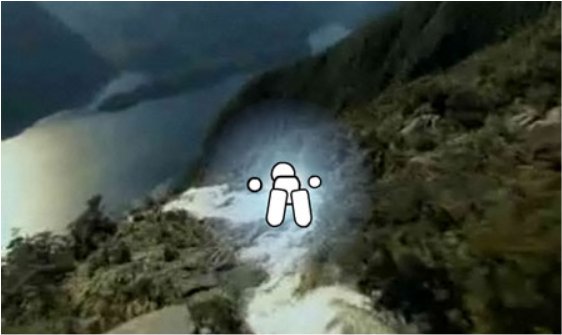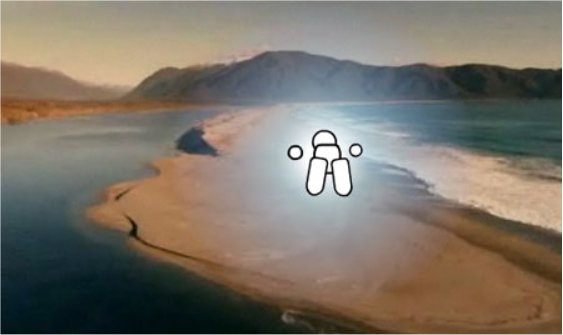Lucid Dreams: The WILD Technique for Induced Lucid Dreaming
The Wake Induced Lucid Dream (aka WILD) is the most powerful lucid dreaming technique known to man for two reasons:
- It enables you to have conscious dreams whenever you want
- It produces the most vivid kind of lucid dreams possible
Also called the Mind Awake / Body Asleep technique and the Hypnagogic Imagery Technique, a WILD enables you to enter a lucid dream – directly from a waking state!
The WILD technique has been used for at least a thousand years by Tibetan Buddhist monks in Dream Yoga. Today, many people use it to have fantastic guided dreams.
In fact, quite a few children develop their own variations of this method instinctively – in order to program and control their dreams. That’s one reason why I believe everyone is capable of having WILDs any night they choose.

A lucid dream involves having full conscious (waking) awareness inside the subconscious dreamworld. Dream control is a side effect!
The following Wake Induced Lucid Dream tutorial is aimed at beginners or people who have dabbled in lucid dreams before. It’s sectioned into four parts:
- Physical & Mental Relaxation
- Hypnagogic Imagery
- Creating a Dream Scene
- Entering The Lucid Dream
How To Have Wake Induced Lucid Dreams
The best time to initiate a WILD is after 4-5 hours of deep sleep, when your body is deeply relaxed and your REM (dream) cycles are at their longest. If you are a deep sleeper, set your alarm about two hours earlier than usual. If you are a light sleeper, simply practice when you naturally wake up in the night.
Alternatively you can practice if you are a little sleep deprived and feel the need to take an afternoon nap; your brain will be keen to catch up on the lost REM sleep.
Step #1 – Physical & Mental Relaxation
Think about how you fall asleep every night. We’re going to replicate that process in the first step of mental and physical relaxation. Your body should already be very relaxed and loose since you’ve just been sleeping. Lie on your back, or whatever position you can lie in for a while without moving. If you have trouble relaxing, use Stephen LaBerge’s 61-point relaxation technique from Exploring the World of Lucid Dreaming
.
Mental relaxation is also key. Empty your mind and gaze into the blackness of your closed eyelids. If any thoughts pop up, just observe them – don’t interact – then send them on their way. If you don’t know how to meditate or can’t enter that state of calm meditation, listen to a brainwave entrainment recording on headphones. I recommend The Lucid Dreaming MP3 or The Astral Projection MP3
. Both create a very deep relaxation ready to initiate a Wake Induced Lucid Dream.
Step #2 – Hypnagogic Imagery
It’s important that you lead your mind to this sleepy, half-dream state before you initiate a WILD. Sometimes you’ll wake up in the night and already be in this state. Other times you will need to relax into it with at least 10 minutes of meditation.
Once in the half-dream state, you’ll experience hypnagogia: a mixture of patterns and colors that take over your vision in the darkness. Observe your hypnagogia and stay relaxed, allowing it to hypnotize you and draw your awareness away from the outside world – and into the internal dream world that is starting to evolve now.
Remember to lie absolutely still, as if your body is melting into the mattress and losing all sensation. Silence your inner monologue if it starts to chime in. You may hear hypnagogic sounds – echoes of voices and other sounds in your head.

Hypnagogic imagery can feel like a fleeting memory impression. Your conscious awareness jumps between the half-dream state and your bedroom.
Step #3 – Creating a Dream Scene
The next step is often the hardest part of a Wake Induced Lucid Dream, but if you are in the right state of mind and body, it can also be deceptively easy. As you have more WILDs, you’ll learn to recognize the signals (or the absence of such signals) that you are ready to lucid dream…
The Active WILD
Do you have a vivid imagination? If so, begin to visualize a scene in your mind’s eye, with as much close-up detail as possible. Explore your surroundings in a calm, peaceful manner and send your visual awareness into the landscape as clearly as possible.
If you are a musician, then you probably have a better auditory sense, so instead of visualizing, use your imagination to create the sounds of your dream. Listen to everything and make the sounds and voices as realistic as possible.
Alternatively, if you are good at sports or working with your body, induce a kinetic sensation such as walking, running or riding a bicycle. You get the idea now… use your strongest sense to engage your mind in the desired dream. Right now it’s all just a form of vivid day dreaming but that will soon change…
With your mind in the half-dream state, allow your body to fall asleep altogether: lose all awareness of it and it will stop delivering sensations to you. Once this happens, your perception of your body will switch to the half-dream state. You may sense that you are no longer lying in bed – but now walking along a beach! This impression will become more and more intense until you find yourself totally immersed in the dream.
The Passive WILD
But wait — not everyone is good at visualizing or creating a dream scene. Sometimes you may be so swept up in your ‘clear mind’ meditation that your body falls asleep before you have the chance to create a dream scene. What happens then?
Donate to In5D
With over 6,000+ free articles and 1,200+ free videos, any donation would be greatly appreciated!
Much love for your kind donation,
Gregg
Then some interesting things happen. Since your consciousness is still linked to your physical body, which is now asleep, you may feel the effects of sleep paralysis. This is a natural protection mechanism which stops you from acting out your dreams. It happens every night, but usually by this stage your mind is asleep too. So if you feel like your limbs are going numb, or a lead blanket is moving up your body – don’t fight it. Instead, relax and rejoice in the fact that you are about the enter a Wake Induced Lucid Dream!
Around this stage another strange thing may happen: vibrations. You may become overwhelmed by a very loud buzzing, humming or vibrating sound. The whole thing can make your heart race and throw the whole WILD attempt off. However once you get used to it, you’ll know to just stay calm and focused. They will pass on their own in a matter of seconds and then you will be free to enter your lucid dream.
In a passive WILD, the dream scene is usually created out of your memory of your bedroom or wherever you are sleeping. Sometimes you can send your awareness to another dream scene straight away, but generally without any other kind of imagery at work, you’re going to find yourself lying in a dream version of your own bed.
This can be confusing to say the least! You may feel like you’ve just opened your eyes and woken up. Be sure to perform a reality check at this point. There is a good chance that you are dreaming, so don’t roll over and go to sleep or the lucid dream will be wasted! Note the similarities between this technique and inducing an Out of Body Experience (OBE) – where impossible things may start to happen…

You can intensify the imagined dream state by visualizing vivid images, sounds and movements that jolt your consciousness into your dream body.
Step #4 – Entering The Lucid Dream
The final step is to fully submerge your awareness into the lucid dream – and stabilize the dream to prevent yourself from waking up.
If you used the active method, keep exploring your dream scene through your primary sense and allow other senses to join in too. When you feel your body move into the dream, the whole imagined scene will suddenly become 3D and surround you.
Congratulations! You have just walked your mind from a conscious waking state into a conscious dreaming state. Stabilize your awareness in the dream by saying “I’m dreaming” and rubbing your hands together (to create kinetic sensation).
If you used the passive / OBE method, you now need to exit your body, by separating your dream body from the distant sense of your physical body which is also lying in bed. This is one of the quirks of Wake Induced Lucid Dreams and Out of Body Experiences. It’s probably caused by the confusion of the conscious brain switching from waking reality to the lucid dream world (aka false awakening in this instance).
You may be able to climb out of bed normally, however if the sensation of sleep paralysis is still partly with you, it will be hard to move your limbs. In this case, try sinking or floating out of your body. Imagine how it feels when you’re swinging really high on a swing in the park. That imaged movement can free you from your body.
Alternatively, begin to visualize a new dream scene – just as we did in the active WILD method. Use your most powerful sense and engage yourself in the picture. It should be easier to create a dream scene from this state and teleport instantly in the dream.

When your conscious bodily awareness switches from the external physical world to the internal dreamworld – you are lucid dreaming!

Troubleshooting Wake Induced Lucid Dreams
The most common complaints in beginners trying to have Wake Induced Lucid Dreams are one of two extremes: either they can’t relax enough, or they can’t stay awake.
- Relaxing your mind and body is absolutely essential. If you are lying in bed tossing and turning, or your head is full of internal dialogue, then you are far too alert to have a WILD. The best solution for this is brainwave entrainment, something I’ve used for years in lucid dream induction and general meditation. Entrainment is a form of white noise that safely slows down your brainwave activity so that you enter a state of clear mind meditation with very little effort.
- Staying awake is important too if you want to have a lucid dream. But it takes practice and mental conditioning to stay conscious while your body falls asleep. The best solution here is to practice WILDs when you are relaxed but not completely exhausted. During the visualization part, focus all your mental energy on creating the lucid dream scene you want to enter. Prevent your mind from wandering at all costs! Fortunately a complete WILD routine need only take a few minutes (especially if you begin from a half-dream state in the night) so if you can remain focused and awake for that long you will be fine.
Image: Pixabay
In5D PATREON: Click here to help support our work thru Patreon. Your support is greatly appreciated!!!
Follow In5D on Patreon, Rumble, Telegram, Twitter, Bitchute, TikTok, Instagram, Facebook, YouTube, Gab, and Truth Social
Follow In5D on Patreon, Rumble, Telegram, Twitter, Bitchute, TikTok, Instagram, Facebook, YouTube, Gab, and Truth Social 

























